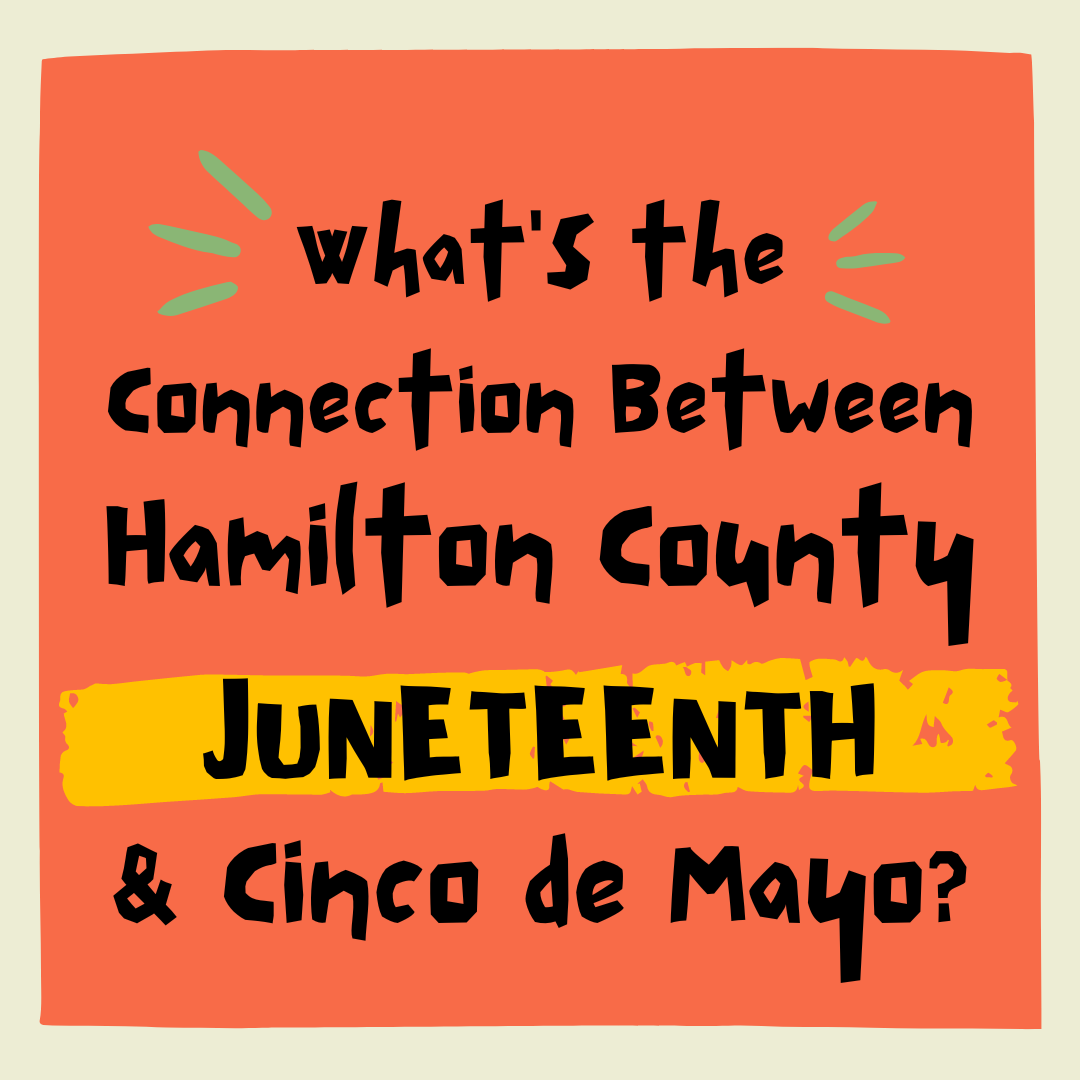By David Heighway, Hamilton County Historian
I have looked at Juneteenth from some different angles over the last couple of years, including Hamilton County’s connection to the holiday and the African American Civil War soldiers from Hamilton County. But, I recently saw some comments on social media about Cinco de Mayo celebrations, or lack thereof, in the area, and I thought of another aspect. We do, in a sense, recognize the Mexican celebration by observing Juneteenth Day. Yes, there is a connection, but it requires an understanding of North American geopolitics in the 1860s.
As many people know, Cinco de Mayo is a celebration of the victory by the Army of the Republic of Mexico at the Battle of Puebla in 1862. The battle occurred because the French Empire had invaded Mexico in 1861 and installed a puppet monarchy. The French were able to conduct this blatant violation of the Monroe Doctrine because the formerly United States were busy slaughtering themselves on the battlefields of the Civil War.
The Lincoln administration was also in a tenuous situation internationally. If any of the Great Powers of Europe chose to recognize the Confederacy, it could spell defeat for the Union. An international incident nearly arose when parts of the Russian Imperial Fleet paid diplomatic visits to the cities of New York and San Francisco.
After the defeat of the Confederacy in 1865, the US government quickly turned its attention to the situation in Mexico. While maintaining an official distance, the US showed its support for the government of President Benito Juarez by sending surplus military equipment across the border. There were Mexican regiments entirely outfitted in blue Union uniforms. Interestingly, some ex-Confederate officers evaded capture after the war by running to Mexico and joining the French Imperial Army.

Names of the African American soldiers on the Crownland Monument, some of whom could possibly have been in Galveston on June 19, 1865.
This connects to Juneteenth Day because after the French threatened retaliation for US interference, the government in Washington DC began sending active troops to Texas to serve out their enlistment by guarding the border. Some of these troops were from Hamilton County as members of the 28th Regiment of United States Colored Infantry.
By happenstance, some of the troop ships landed in Galveston, Texas on June 19, 1865, when General Granger issued his General Order No. 3 declaring freedom for the enslaved people of Texas. It was probably very helpful that there were extra soldiers there to enforce this ruling. The troops then went on to various border towns where they were stationed to show US strength and keep the French bottled up. They also continued to run supplies across the border. This interaction makes it a possibility that they may have met veterans of the Battle of Puebla.

A detail from an 1865 map of Texas that shows Brazos Santiago. The original map is at the Library of Congress and also shows Galveston, Texas.
The Hamilton County men that were a part of the 28th USCT arrived at Brazos Santiago on July 1st. From there, they went to Indianola, Texas, where they disembarked on July 5th. They were eventually stationed at Corpus Christi where they mustered out on November 8th.
It should be remembered that both Cinco de Mayo and Juneteenth are celebrations of military victories by people fighting for a free and representative government. The best use of the day would be to honor the bravery and sacrifices of all the freedom-loving soldiers of the time.





